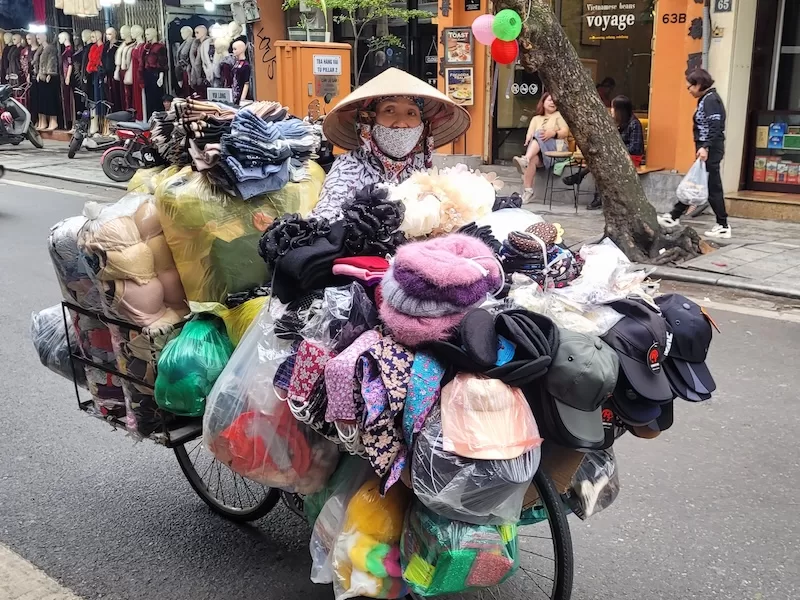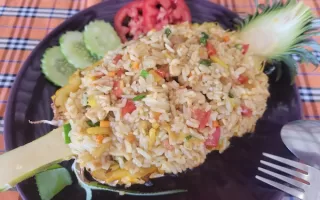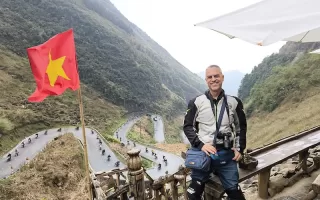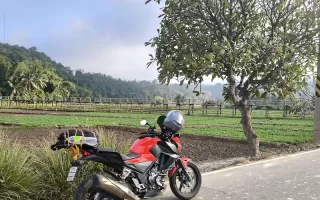Over the past few years, we’ve heard quite a few stories about Vietnam from friends.
When we decided to embark on a journey and travel through countries in the Far East, Vietnam immediately made the list.
Vietnam is a fascinating country. Its pleasant weather allows traveling during the whole year. It’s a diverse country with mountainous areas alongside plains, bustling cities full of life, alongside vacation spots and green rice fields.
A country where the local culture overflows with colorful celebrations, traditional dances, and captivating festivals.
A mouthwatering cuisine and a magnificent coffee scene.
Vietnam has several climate zones, so it’s helpful to understand the best travel times for each region:
- In the south – from March to June, it’s hot and dry. July to November is rainy, and from December to February it’s cooler and dry. April is the hottest month. In the rainy season, flooding may occur and mosquitoes appear. The recommended time to visit the south is between December and February.
- In the north, there are four distinct seasons. Winter is cold, summer is hot and rainy. Spring (March–April) is very pleasant, as is fall (October-December). In the mountains and higher areas in the north, temperatures vary greatly by season – very hot in the summer and snow in the winter.
To enter the country, you need a visa.
The visa application must be filled out carefully and submitted in advance.
We filled out the application while living in Koh Lanta, Thailand, submitted it online, and about a week later received an email saying the visa had been approved. With the approval in hand, we booked flight tickets to Hanoi and reserved a hotel for the first three nights.
Because I kept seeing people ask the same questions in various Vietnam travel groups, I realized that getting a visa can be a bit tricky, so I wrote a guide to obtaining a visa for Vietnam.
In early March, we said goodbye to our beloved Thailand and took a two-hour flight from Bangkok to Hanoi.
At the airports in both Bangkok and Hanoi, we were asked to show our visa. In our case, the official was satisfied with a digital copy saved on our phone. However, since we’d heard of cases where people were asked to present a printed copy, I recommend bringing a printed version with you just in case.
Hanoi
Hanoi, whose literal meaning is “inside the river,” is the capital of unified Vietnam and is located along the Red River in the north of the country. It’s the second-largest city in the country after Ho Chi Minh City.
The city has several lakes, one of which is Hoan Kiem Lake, located in the city center. Ngoc Son Temple has stood on an island in the center of the lake since the 18th century.
The Old Quarter, located north of the lake, is an area filled with ancient streets, markets, restaurants, and cafes.
It’s an area that stays active almost 24 hours a day.
It’s also the best area to stay if you want to be close to the heart of the action and walk everywhere.
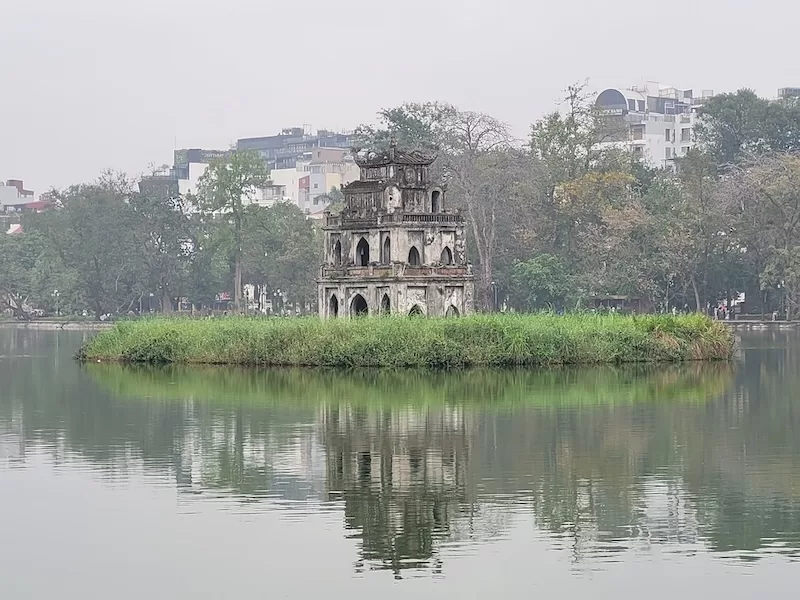
Getting Around
If you stay in the Old Quarter, you can walk almost everywhere easily.
When you feel tired, weighed down with shopping bags, or just in the mood for another authentic experience, you can hop on a tuk-tuk. These bicycle rickshaws with a seat in the front and a driver pedaling behind are everywhere. There’s no need to order them through any app, they’ll approach you even if you don’t ask.
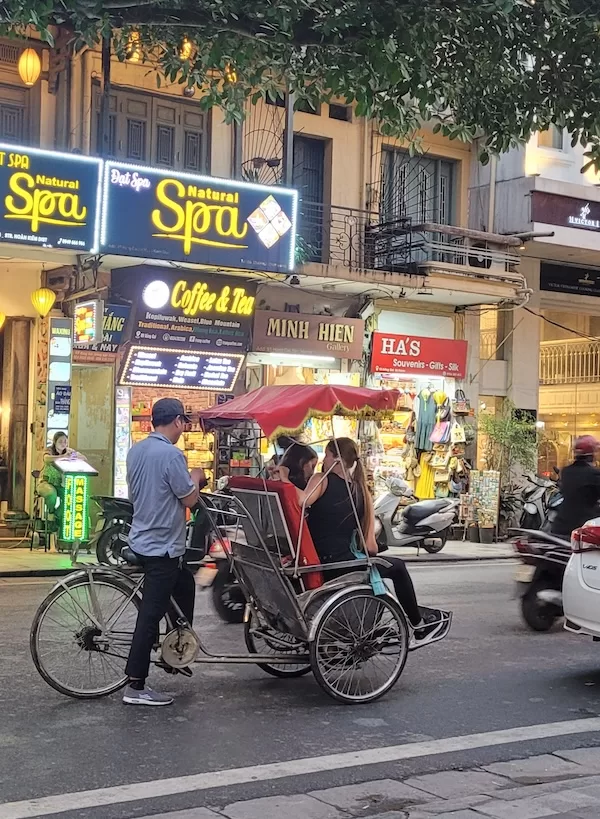
The Atmosphere in the City
We, as mentioned, arrived in Hanoi straight from Thailand. We had heard that Vietnam would feel different. People told us, “Vietnam is not Thailand,” but we didn’t really understand what they meant, until we arrived.
Hanoi is much noisier. Locals speak loudly and often yell, and the constant honking of cars and motorbikes never stops.
Garbage (used napkins, cigarette butts, fruit peels, and sunflower seed shells) is thrown directly onto the ground 🤨.
Sidewalks are used for parking motorbikes or setting up makeshift tables and chairs for local eateries.
Some businesses even use the sidewalk as workspace or to display their goods.



What about pedestrians?
Wasn’t the sidewalk invented for them? They simply walk in the street among the cars, scooters, and tuk-tuks. That’s really makes a lot of sense… 😆.
Walking the streets gave us endless photo ops and experiences:
Mobile vendors bringing fruit, clothes, hats, and flowers directly to you.
A garbage truck playing a tune.
Dancing puppets at the grand opening of a new restaurant.
Stalls for key duplication and tire repair right on the sidewalk.
And the highlight: lettuce drying on a motorbike 🤣.







Hanoi serves as a base for exploring the north of the country.
The Old Quarter, with its many shops, is the place to stock up on everything you need for your travels: clothes, jackets, shoes, bags, hats, and more.
Most stores offer high-quality knockoffs of brands like The North Face, Columbia, Patagonia, Nike, Adidas, and others.
On weekends, a night market is held on Hàng Đào Street, near the lake. The street is closed to vehicles, and various stalls are set up.
The market is open Friday to Sunday, until 11:00 p.m.
You can find clothes, shoes, bags, jewelry, and souvenirs there.
Bargaining is common in Vietnam (both in markets and shops).
Sometimes it’s just a few $$$ off, but do it smartly and politely.
What to Eat?
Hanoi lets you enjoy an authentic and tourist-friendly experience at once.
You’ll find street food stalls, local restaurants aimed more at visitors, and of course, restaurants with Western menus.
Pho
Vietnam’s national dish is the famous Pho, a variety of Vietnamese soups made from chicken or beef broth, seasoned with local spices and served with meat (usually beef, sometimes chicken) and vegetables.
They’re typically served with a bowl of rice noodles and another bowl of fresh greens, along with hot chili peppers you add yourself.
All over Vietnam, you’ll find small and often improvised restaurants. Walking the streets, you’ll see sidewalks packed with low tables and chairs, and locals eating Pho.
It’s cheap and commonly eaten throughout the day.
We, of course, also had Pho. Since street restaurants usually serve meat-based versions, we found a tiny restaurant called Hương Quán with just three tables, where we had delicious vegetarian Pho multiple times.
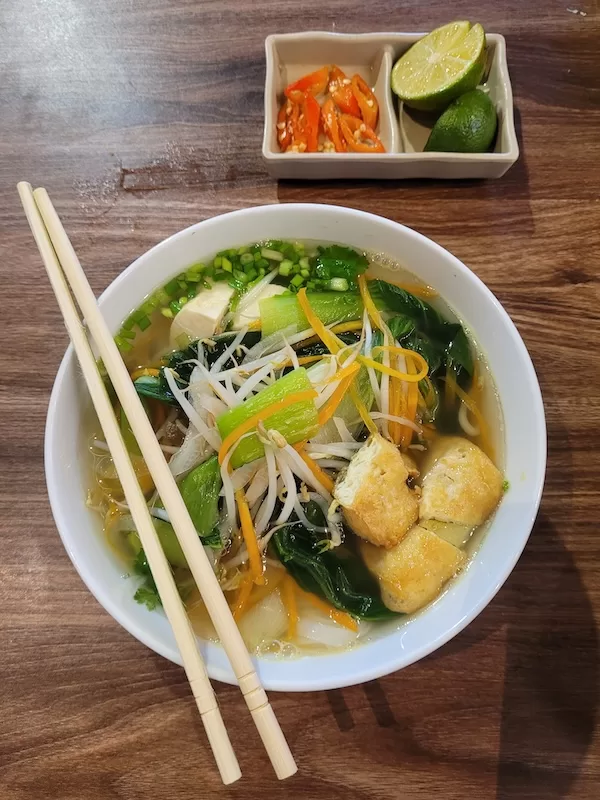
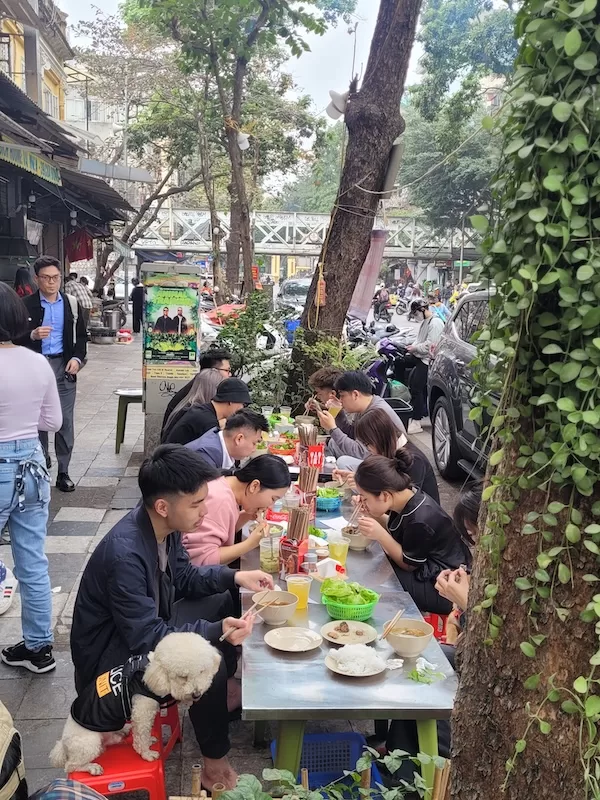
Bánh mì
Another dish you’ll find all over the city (and country) is Bánh mì, a culinary fusion of a crisp French baguette (a colonial legacy from French rule in Vietnam) with local flavors: sausages, herbs, pickled vegetables, and spicy sauces.
You can find these tasty and satisfying sandwiches at street stalls, bakeries, and restaurants.
Different cities offer different versions, and in Hanoi you’ll find a simpler, delicious version that’s not overloaded with extras. Fortunately, there’s also a vegetarian version.
We had Bánh mì in two places. One we stumbled upon by chance, the other we visited following a recommendation. Now it’s my turn to recommend 😊.
Bánh mì 25 is a popular and highly recommended place .
Chances are when you arrive, you’ll see a long line of people waiting to order.
If you’re not too hungry and don’t mind waiting, order a sandwich and cross the street, there you’ll find another line of people waiting for a seat. In my opinion, their Bánh mì is worth the wait.
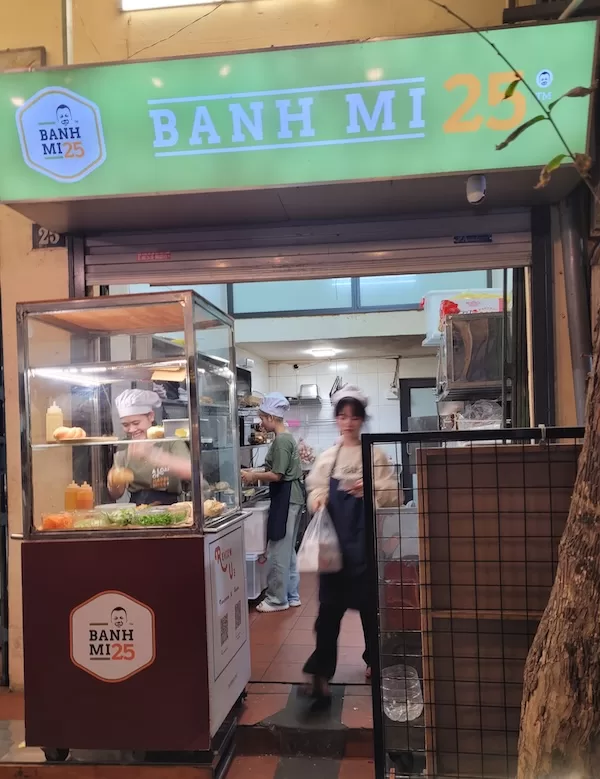
In this post I wrote about food, getting around, and shopping.
What didn’t I write about? Coffee.
Vietnamese coffee deserves a post of its own.
Curious why?
Everything about Vietnam’s coffee scene, right after the post on Ha Giang Loop.
